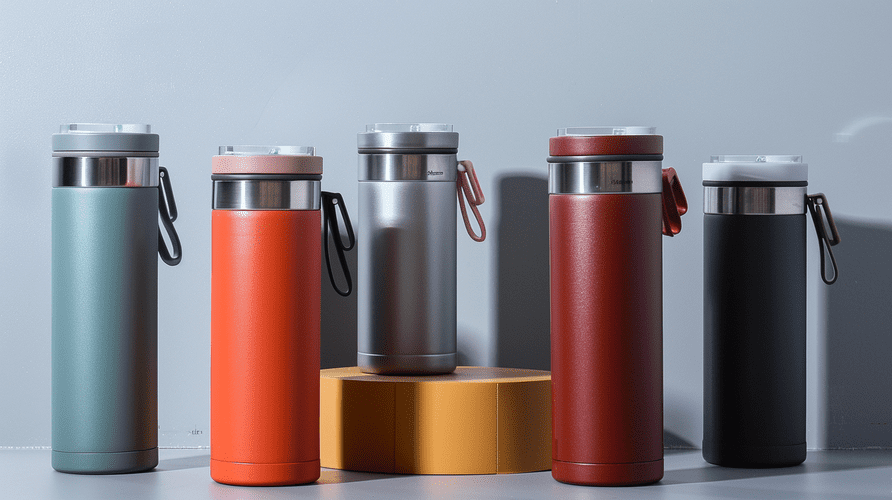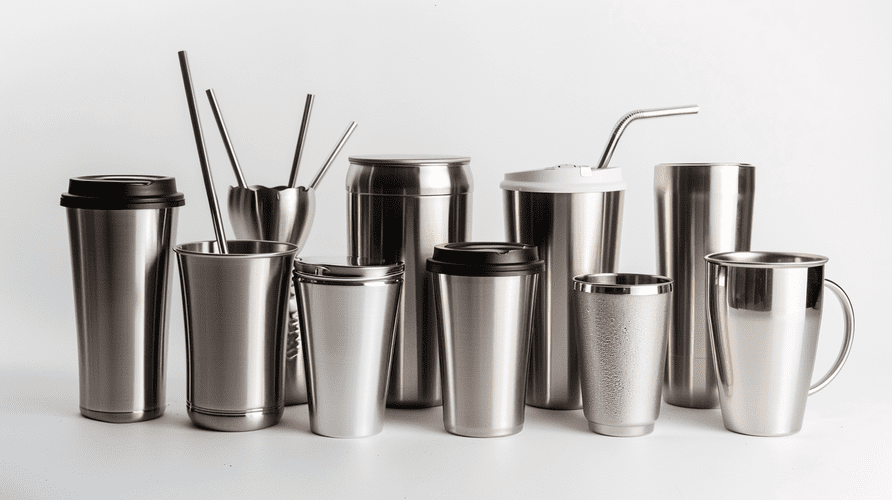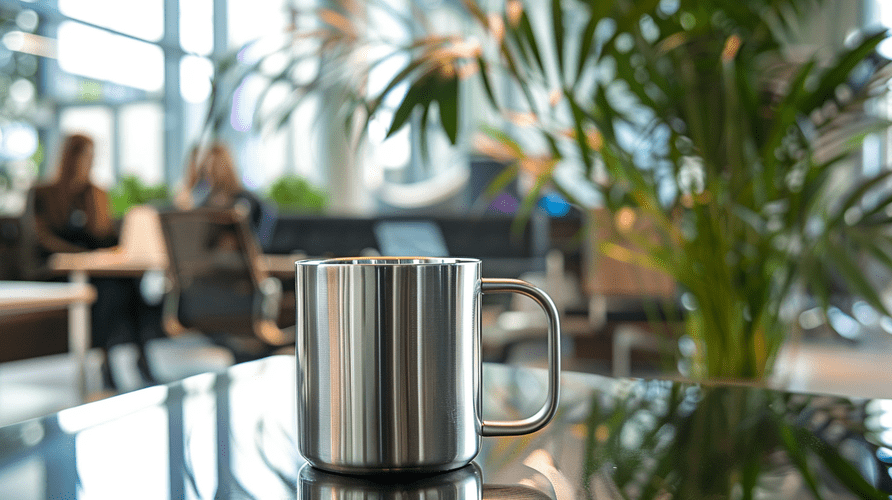Choosing wrong steel ruins product quality. Imagine customer complaints from rusty bottles. Understand these differences to make a smart choice for your business now.
304 stainless steel is food-grade, rust-resistant, and best for water bottles. 201 steel is cheaper but rusts easily. So, 201 steel is not suitable for drinkware.

You now know the basic difference between these two types of steel. This is a very important starting point. But, as a business owner or procurement officer, you probably want to know more details. So, let's look deeper into each type and what it means for your products and your customers. This will help you make the best decision.
Is 201 stainless steel any good?
Tempted by the lower cost of 201 steel for your water bottles? This could lead to product failures. It might damage your brand's trust significantly. Learn why it's a risky choice.
For drinkware, 201 stainless steel is generally not good. Its poor corrosion resistance means it can rust. This rust can affect taste and potentially pose health risks to users.

When I talk to clients like Mark Shenng, who care about quality but also price, the topic of 201 stainless steel often comes up. It's cheaper, yes, but is it truly "good" for a product like a water bottle? My answer, especially for businesses exporting to America or Europe, is usually no.
What Makes 201 Steel Different?
201 stainless steel has a different recipe than 304. It contains more manganese and less nickel. Nickel is a key ingredient for fighting rust. Less nickel means 201 steel is not as strong against rust and corrosion. This is especially true when it constantly touches water or acidic drinks like fruit juice or coffee. For us at Icobottle, providing durable products is essential. So, we usually steer clear of 201 for drinkware.
The Rust Risk with 201 Steel
The biggest problem with 201 stainless steel in water bottles is rust. I've seen cases where bottles made from 201 steel start showing rust spots after only a short period of use. This not only looks bad but can also leave a metallic taste in the water. For your customers, this is a big turn-off. They expect their stainless steel bottle to be, well, stainless.
Cost Savings vs. Long-Term Problems
The lower price of 201 steel might seem attractive at first. You might think you can increase your profit margin. However, think about the long-term costs. These include customer returns, damage to your brand's reputation, and even potential health liability issues. In my experience, the small upfront saving is rarely worth the significant risks and headaches down the line. Investing in better material from the start is a wiser business decision.
Here's a simple comparison:
| Feature | 201 Stainless Steel | 304 Stainless Steel |
|---|---|---|
| Nickel Content | Lower | Higher |
| Manganese Content | Higher | Lower |
| Corrosion Resistance | Poor | Excellent |
| Cost | Lower | Higher |
| Suitable for Drinkware | No (generally) | Yes (industry standard) |
Will 304 stainless steel rust?
Worried that even "food-grade" 304 steel might rust over time? You need assurance that your high-quality bottles will stay looking good. Understand when 304 steel stays strong.
304 stainless steel has excellent corrosion resistance. It rarely rusts under normal use for water bottles. Proper care and avoiding harsh chemicals help it last a long time.

A common question I get is about the durability of 304 stainless steel. Business owners want to be sure that the products they sell, like stainless steel water bottles, will live up to customer expectations. They don't want to deal with complaints about rust. So, let's be clear about 304 steel.
Why 304 Steel Resists Rust So Well
304 stainless steel is often called "food-grade1" for a good reason. It contains a good amount of chromium (usually 18%) and nickel (usually 8%). This combination is key. The chromium creates a very thin, invisible protective layer on the surface of the steel when it's exposed to oxygen. This layer is called a passive film. It shields the iron in the steel from rusting. If this layer gets scratched, it can often heal itself if there's oxygen around. This self-healing ability is why 304 is so good against rust for products like our hip flasks and coffee mugs at Icobottle.
Can 304 Steel Ever Rust?
While 304 stainless steel is very rust-resistant, it's not completely rust-proof under all possible conditions. It can rust in very specific, harsh environments. For example, long exposure to strong chloride solutions (like bleach or some industrial chemicals) or very salty conditions, like seawater, can damage the protective layer and cause rust. Also, if the surface is contaminated with iron particles (for instance, from steel wool not made of stainless steel), those particles can rust and make the 304 steel appear rusty. But for everyday use in a water bottle, tumbler, or cup, with regular water or common beverages, rust is extremely rare if the product is genuine 304 and is cleaned normally.
Ensuring You Get Genuine 304 Steel
The most important thing is to make sure you are actually getting 304 stainless steel2. Some less reputable suppliers might cut corners. This is a pain point for buyers like Mark, who worry about certificate fraud. At Icobottle, we always provide material certifications for our products. We believe in transparency. My advice is to always work with trusted suppliers. Ask for test reports or certifications. This ensures the quality you pay for is the quality you get.
How do I know if my SS is 202 or 304?
Unsure if your supplier delivered the promised 304 steel? Getting a lower grade like 202 can compromise your product's quality and your promises. Learn methods to verify steel grades.
Visually distinguishing 202 from 304 steel is very hard. Reliable methods include chemical spot tests or professional lab analysis (like XRF). Always ask suppliers for material certificates.

This is a critical question for any B2B buyer. You've ordered 304 stainless steel, but how can you be sure that's what you received? Grades like 201 or 202 look very similar to 304 to the naked eye. But their performance, especially against rust, is quite different. This is where quality inspection becomes really important.
Why It's Hard to Tell Them Apart
The main challenge is that 202 stainless steel (which is similar to 201 in that it has higher manganese and lower nickel than 304) looks almost identical to 304. Both are shiny and have that classic stainless steel appearance. You can't just look at a water bottle and know the grade. This is why some suppliers might try to substitute a cheaper grade. They hope buyers won't notice until it's too late.
Simple Tests You Can Try (With Caution)
There are a few simple tests, but they aren't always 100% accurate.
- Magnet Test: Generally, 304 stainless steel is non-magnetic in its raw, annealed state. 200-series steels like 202 might be slightly magnetic, especially after being worked (like formed into a bottle). However, 304 can also become slightly magnetic after cold working, so this test isn't foolproof.
- Spark Test: This involves grinding the metal and observing the sparks. Different alloys produce different spark patterns. But this requires a lot of experience and a trained eye. It's not practical for most buyers.
- Chemical Spot Tests: You can buy testing kits that detect certain elements. For example, a manganese spot test can help identify 200-series steels because they have much higher manganese content than 304. If the test shows high manganese, it's likely not 304. These kits are relatively inexpensive and can give a good indication.
The Best Way: Certification and Professional Testing
The most reliable ways to know the grade are:
- Material Certification: Always demand a material test certificate from your supplier for each batch. This certificate should show the chemical composition of the steel used. This is something we at Icobottle provide to give our clients peace of mind.
- Professional Lab Testing: If you have serious doubts, you can send a sample to an independent lab for analysis. X-Ray Fluorescence (XRF) testing is a common non-destructive method that can accurately determine the elemental composition of the steel. It costs more, but for large orders or when trust is low, it can be worth it.
Here's a quick look at identification methods:
| Method | Accuracy | Ease of Use | Cost | Notes |
|---|---|---|---|---|
| Visual Inspection | Very Low | Easy | Free | Unreliable for distinguishing grades. |
| Magnet Test | Low to Medium | Easy | Free | Can be misleading due to cold working. |
| Chemical Spot Test (Mn) | Medium to High | Moderate | Low | Good for indicating 200-series vs 304. |
| XRF Analysis (Lab Test) | Very High | Requires Lab | Moderate | Most accurate method. |
As a procurement officer or company owner, your best defense is a good offense: choose reputable suppliers and insist on transparency and proper documentation.
Conclusion
Choosing 304 stainless steel is vital for quality water bottles. Always verify your supply chain. This ensures product longevity and protects your brand's good name.

